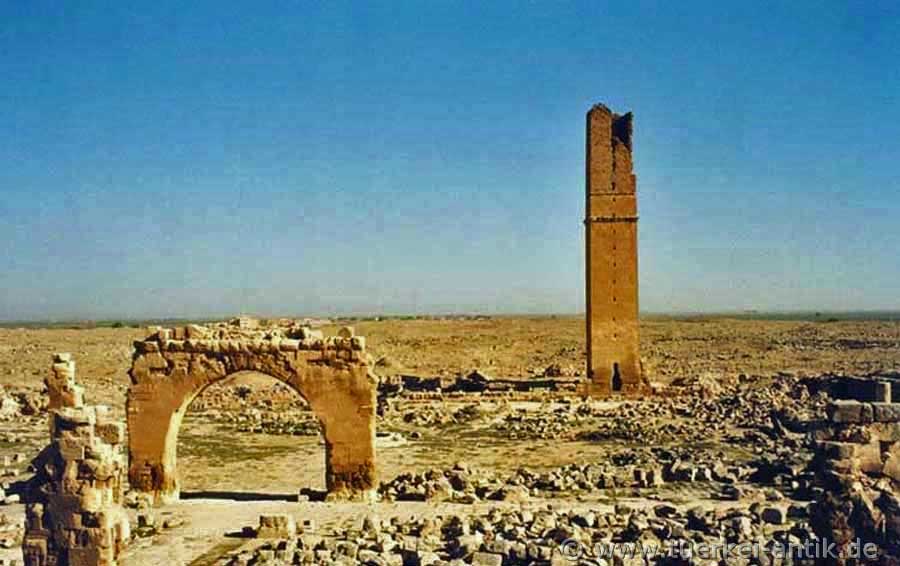 |
| Harran in Syria | |||
|
|
|
||
| The typical trulli houses (or also beehive houses) of the old town | |||
|
Harran is already mentioned on the cuneiform tablets found in Syrian Mari from the beginning of 2000 BC. In Hittite inscriptions from the middle of the 20th century B.C. it can be read that the moon god Sin of Harran and the sun god witnessed the negotiations between Hittites and Mitanniern. If one wants to believe the Old Testament, Abraham lived in Harran and his father died here. Together with his father Terach he had hiked from Ur in Chaldea (the south of today's Iraq) to Harran. |
|||
|
|
|||
| The transition from the Omayad Mosque to the Islamic University | |||
|
There is not much left of the once proud city. What we see are the remains of a large Omayad mosque, as can still be found today in Aleppo and Damascus and the first Islamic university. The gate shown in the photo is said to have connected both complexes. The Harran quarry and the Han al-Ba'rur caravansary are also worth mentioning. |
|||
|
|
|||
| Remains of the Omayad Mosque | |||
|
The place, situated on the northern edge of the fertile Mesopotamian plain, was already settled in the 3rd millennium BC. Harran has been a travel and trading station between Karkemisch on the Euphrates and Nineveh on the Tigris since the ancient Babylonian period at the latest.
At the end of the 14th century B.C. Harran was destroyed by the Hittites under uppiluliuma I. After that the region came under the control of the Assyrians. Around 850 Salmanassar III renewed the temple of the moon god Sin, and the city became an important centre of the Assyrian Empire. |
|||
|
The Romans called the place Carrhae. It became particularly famous in 53 B.C. when the Roman triumvirate Crassus was killed in the Battle of Carrhae together with over 25,000 Roman soldiers in the battle with the Parthians. Plutarch reports in detail about this battle, which was one of the worst defeats in Roman history. |
|||
|
|
|||
|
Under Emperor Septimius Severus the place became part of the Roman Empire at the end of the 2nd century AD. His son, Emperor Caracalla, was murdered on his way to the Shrine in 217. In 260 A.D. a massive battle took place near Carrhae between the Persian king Shapur I and the Roman emperor Valerian, during which the latter was defeated and captured. The Palmyrenian king Odaenathus conquered the city from the Persians in 264. When the empire of Palmyra was destroyed a few years later by Emperor Aurelian, Carrhae fell back to the Roman Empire. |
|||
|
|
|||
|
Unlike neighbouring Edessa, which very early on became a centre of Christianity, Carrhae remained a refuge of the old religion for a very long time in late antiquity. In fact, the Roman emperors worshipped the moon goddess Selene there until the 4th century, as the last Julian. After the conquest of Edessa by the Byzantines, the Fatimids under Caliph Az-Zahir built a fortress in Harran in 1032, under whose walls the ancient Babylonian moon shrine of Ehulhul disappeared. In the course of the First Crusade, the Crusaders conquered Harran, but suffered their first decisive defeat against the Seljuks in the Battle of Harran in 1104. In 1187, Sultan Saladin improved the mosque in Harran. In 1260 the Mongols destroyed the mosque and probably also the last temple of the Sabians in Harran, which was burned down and never reached its old significance again. The fortified walls of the citadel were preserved at the end of the 12th century. |
|||
| Photos: @chim | |||
| Translation aid: www.DeepL.com/Translator | |||
| Source: Wikipedia and others | |||
|
|
|||


